The conceptof electronic current has had many debates. The problem arises because there are two forms of charge, positive and negative.
In this answer I will treat current and flow with the same meaning. Current is the flow of charge.
If a compass needle is used to detect the magnetic field generated by a moving charge, then negative charges moving to the left will deflect the compass in the same direction and amount as the same quantity of positive charge moving to the right.
Moving the compass around a circuit (keeping the same orientation and distance to the charge flow) such as the one shown in the original post, the compass must deflect exatly the same amount everywhere along the circuit. The charge carriers in the external wire are negative electrons. The charge carriers in the battery are negative and positive ions flowing in opposite directions.
The magnetic field is then used to define a direction for electric current, not charge flow. Positive and negative charges flowing in opposite directions produce the electric current in the same direction.
Physically the electric current in a stationsry wire is carried by electrons. In transistors, holes and electrons contribute to electric current. In chemical solutions (voltage cells), both positive and negative ions contribute to electric current.
I always think about the physical, the crystal and the valence bond and the electron moves, and the CONVENTIONAL CURRENT go to opposite.
The convention is about how both electron and proton charge flows can produce the same electrical current including direction and magnetic field.
Including velocity \$v\$ and charge density \$\lambda\$ in the definition of current:
$$i=\frac{dq}{dt}=\frac{dq}{dx}\frac{dx}{dt}=\lambda v\tag{Equation 1}$$
The charge density can be positive or negative as can the velocity. So positive charge having a positive velocuty produces a positive current as does a negative charge having a negative velocity.
A negative current is produced by either a positive charge with a negative velocity or a negative charge with a positive velocity.
The lesson that I learned was to connect electric current to the magnetic field to get the sense of direction. I had to stop thinking that conventional current direction is some virtual construct that came from a poor choice. It is a necessary result that came from observation of currents and magnetic fields. I do my best to avoid using the phrase "current flow" although we all do it (even Ampere). Charge flow, electron flow, ion flow are better phrases.
Use Equation 1 for the meaning of electric current.
